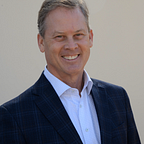Engineering-Focused L-band Will Bring Competition and Innovation to Help Bridge Digital Divide
By Chip Pickering
COVID-19 has focused the spotlight on our nation’s problems with the digital divide. Stories of parents driving their children to library parking lots for Wi-Fi access underscore our failure and must drive America toward new solutions. Fast.
INCOMPAS represents new entrants in the communications marketplace who seek to provide new technologies and disruptive services, challenging old technology favored by large incumbents. More competition breeds innovation and is critically important to local communities and industries. Now, anytime disruption is mentioned, legacy, special interests get scared. They scramble and resort to tired old lobbying tactics seeking to prevent new ideas from altering the way they do business — even if doing so would, on balance, benefit the public at large. Problem is, those strategies aren’t always true, as incumbents gin up false, misleading efforts to thwart necessary change and competition.
That’s exactly what’s happening with the recent Federal Communications Commission (FCC) approval of a new plan to utilize desperately needed mid-band spectrum that will become a key infrastructure component of the digital and 5G economy.
In its bipartisan, unanimous agreement supporting new technology solutions from Ligado Networks, the FCC noted that by “leveraging its satellite operations in combination with terrestrial service, Ligado can provide access to Iot (industrial Internet of Things) services in rural areas … thereby helping to close the digital divide.”
I have long argued for an “all-of-the-above” effort by the FCC to bring more competition across all markets. We need broadband action on land, air, sea and space. In the critical L-Band space, we have an upstart competitor courageous enough to invest decades and billions of dollars. They are challenging entrenched special interests in order to provide mission-critical services in the public’s best interest. Our members are all about courage and competition, and the FCC delivers that in this order by focusing on sound science and technical engineering, ultimately benefiting every taxpayer, consumer and business regardless of where they reside or operate.
This has been a long fight. Over a 17-year proceeding, Ligado has faced significant scrutiny from both government and private sector interests. Ligado has responded and adjusted, as needed, to address legitimate concerns, and the FCC — the expert agency with its capable technical and engineering staff — carefully crafted a framework that will ensure that there will be no harmful interference. Many times private sector interests and government agencies prefer to keep the status quo. In this case, we simply cannot afford to squander the promise and progress of a new 5G industrial Internet of Things network. We must win the race to 5G against China and close the digital divide, providing economic opportunity throughout the nation.
Thankfully, FCC Chairman Ajit Pai, with unanimous bipartisan support of all the FCC Commissioners, rightfully charted the proceeding forward on its merits, as determined by the agency’s experts and the painstaking technical analysis they conducted on studies and mountains of data submitted into the record.
By following through on its flexible spectrum-use principles and freeing up these greenfield mid-band frequencies for satellite and terrestrial use — such a network would be the world’s first — the FCC has cranked open the innovation spigot and has given our country’s industrial enterprises a competitive advantage when it comes to benefitting from next-generation wireless services. For the public safety and infrastructure industry sectors in manufacturing, transportation, energy, and electric utility, being able to soon harness both terrestrial and satellite connectivity in fixed and mobile machine-to-machine communications at the core of Internet of Things applications is an exciting new development — a veritable game changer.
Ligado should be commended for pushing forward and working with any and all willing stakeholders to address the complex spectrum interference matters that led to the framework of the FCC’s rules. This was clearly a monumental, pioneering feat, and the collaborative efforts to establish certainty in the L-band will have hopefully set a precedent in other efforts to accelerate an important piece for 5G adoption in the country. A broad array of supporters has applauded the FCC’s decision, and it is reassuring to see consumer interest organizations such as Public Knowledge and New America’s Open Technology Institute recognize the merits of the new rules.
On a more local note, my home state of Mississippi adopted a House Resolution nearly a decade ago urging the federal government to expand mobile broadband infrastructure, particularly to underserved and rural regions of this nation, and that it supported private-sector investment in mobile broadband networks that would increase competition, innovation and consumerism while reducing prices. The resolution also noted that technology integrating satellite communications with expanded terrestrial wireless networks would increase the reliability, coverage, access and affordability of all types of communications.
With the approval of its order, it is great to see the FCC finally heeding these kinds of calls to action while relying on its engineering staff to ensure safe rollouts of new types of next-generation services. I applaud the FCC for its diligence and urge all the stakeholders in this matter to move forward, together, for the good of the country and our connectivity goals.
Chip Pickering is the CEO of INCOMPAS, the internet and competitive networks association. He is a former Member of Congress from Mississippi and served as vice-chair of the House Energy & Commerce Committee and was a member of its Telecommunications Subcommittee. Ligado is a member of INCOMPAS.
